The robots UV array emits 20 joules per square meter per second at 1 meter distance of 254-nanometer light which will utterly wreck 9999 percent of germs in just a few minutes without the robot having to do anything more complicated than just sit there. These lamps which emit a short pulse of broad spectrum including UV visible and infrared light have been filtered to emit mainly UVC radiation and are sometimes.
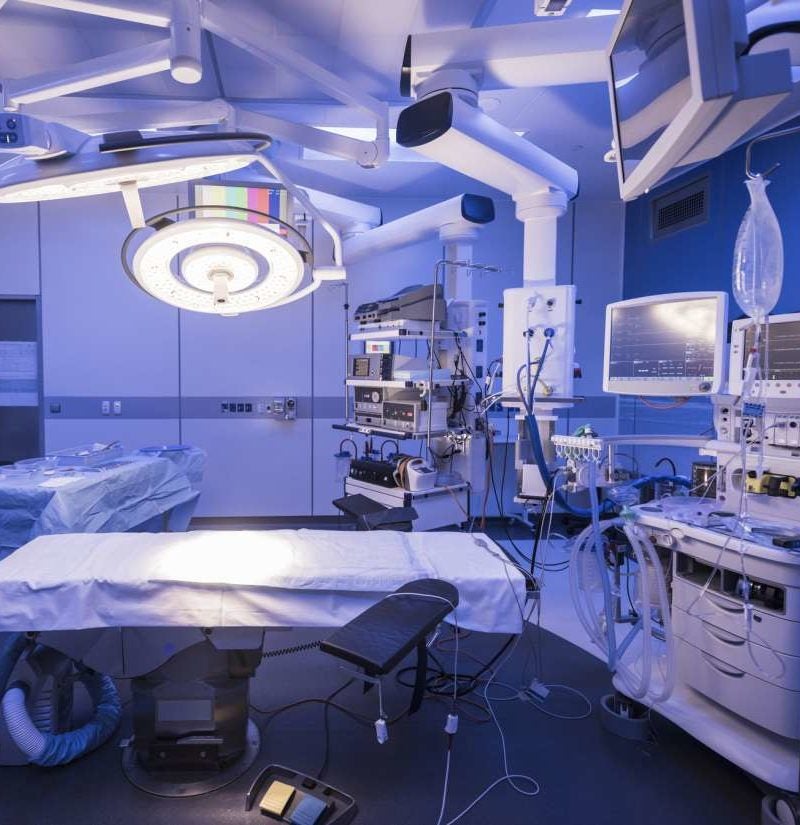 Uv Light Could Reduce Hospital Acquired Infections
Uv Light Could Reduce Hospital Acquired Infections
Available in wall-mount or corner-mount.
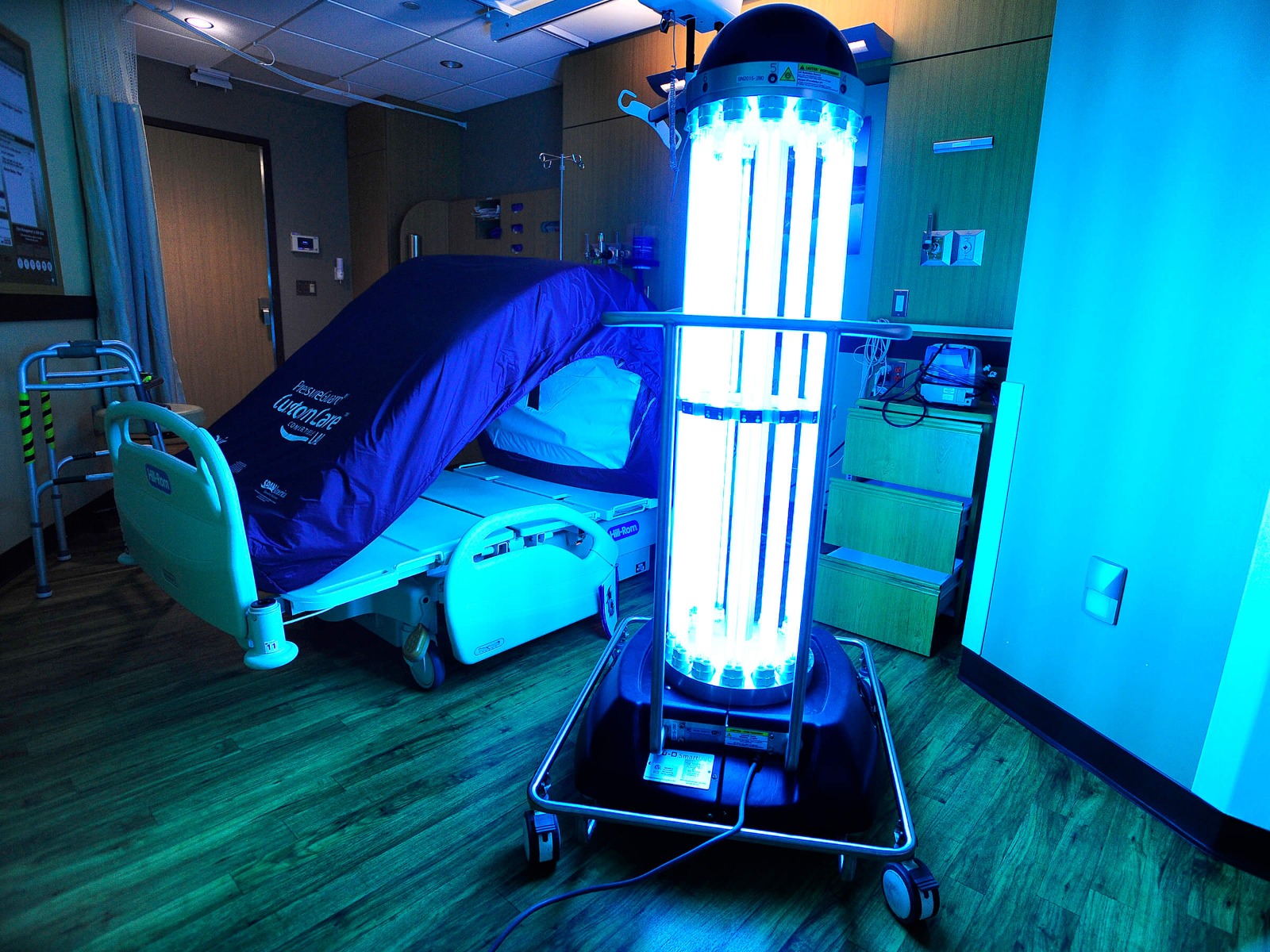
Uv light for hospitals. Pulsed xenon lamps. Germicidal UV light can be effectively utilized in hospitals and public buildings to inhibit microbial growth spreading of infections and to increase indoor air quality. As a result several UVC machines are now in use at Duke University Hospital Duke Regional Hospital and Duke Raleigh Hospital.
Learn more about how our technology is used in Food Service Hospitals Laboratories Nursing Homes. LRC studies the use of UV-A LED lighting to disinfect hospital room UPDATED Levels of UV-A radiation that are safe for humans can kill pathogens over time in a hospital room environment but the radiation can damage other furnishings and equipment. Why UV Light Disinfection for Your Hospital.
Studies have confirmed that UVC light is an effective addition to manual cleaning efforts and can kill harmful pathogens quickly and efficiently. UV Lights for Healthcare Facilities Featuring our Upper-Air Disinfection units made for occupied areas. UVC can also help against mold problems by rendering airborne mold particles and mold spores non.
A type of ultraviolet light called ultraviolet light C or UVC is helping hospitals cut transmission of super bugs like MRSA that linger in patient rooms and cause new infections according to a study by Duke Health researchers. UV-light cleaning shown to cut superbugs hospital-wide CIDRAP. UV technology basically works by producing a high-intensity UV light that passes through the cell walls of bacteria viruses and bacterial spores.
Follow the simple steps listed below to ensure a successful outcome. Many microbes have proved to be susceptible to inactivation using UVC light including in falling order of ease to inactivate bacteria viruses fungi and spores 2. Depending on the room size programming time may vary slightly.
Adding ultraviolet light to standard room cleaning modestly decreases hospital-wide superbugs. 5 latest findings on UV light disinfection in hospitals Staff - Updated Wednesday June 24th 2015 Print Email Earlier this year the ECRI Institute placed disinfection robots at the top of its. The UVC light is absorbed by RNA and DNA in cells and microbes which induces changes apoptosis in the D-RNA structures that result in their inability to replicate.
Hospital-grade UV-C Light Sanitizer for Phones Tablets. It can easily move from room to room in hospitals or any medical setting and is ideal for sanitizing operating ICU waiting and patient rooms restrooms or anywhere there are concerns about. Join our upcoming webinar by registering here.
A common route of infection is touching contaminated surfaces in hospital rooms such as hand rails TV remotes and tray tables. Nationwide leader in providing cleaning and decontamination through UV light cleaning systems for commercial and institutional use throughout the United States. UV light is known to kill superbugs like MRSA VRE K pneumonia and C difficile and are helping hospitals to reduce the transmission of superbugs that linger in hospital rooms causing new infections.
Learn how mass transit hubs are strengthening their COVID-19 responses using UV-C light. The UVDI-360 Room Sanitizer delivers a programmed dose of UV-C light to inactivate pathogens on hospital surfaces. A UV light device could help reduce the risks of catching an infection while in the hospital.
After terminal cleaning is complete prepare the room for UV disinfection. Exposure to UVC light for a specific length of time and intensity kills dangerous microorganisms. Hospitals are the number one place to catch bacterial infections like Staph MRSA and Clostridium difficile C.
UVC a subtype of ultraviolet light The UVC LED Panel Light capable of Sterilization and Disinfection is newly designed with high technical standard for hospital and clean rooms especially for areas where Coronavirus disease COVID-19 Pandemic is serious. Quality UV sterilization lamps are proven to kill K pneumonia and VRE in seconds MRSA in under 5 minutes of exposure at 10 feet away and stubborn C difficile in under 15 minutes at a 10 ft. You may also like Automated disinfection systems help reduce HAIs.
MRSA-UVs Vortex-UV Mobile Room Sanitizer is our most advanced yet extremely affordable ultraviolet tripod lamp that is designed to reduce bacteria viruses and molds in the air and the environment. These units work overhead in infusion areas operating rooms waiting rooms and exam rooms disinfecting the top layer of air with UV light. The DNA RNA and proteins inside the microorganism absorb this intense UV energy and the pathogens are destroyed.
 Seeing The Light On Room Disinfection
Seeing The Light On Room Disinfection
 New Sanuvox Mobile Uv Sterilization System For Hospitals Sanuvox
New Sanuvox Mobile Uv Sterilization System For Hospitals Sanuvox
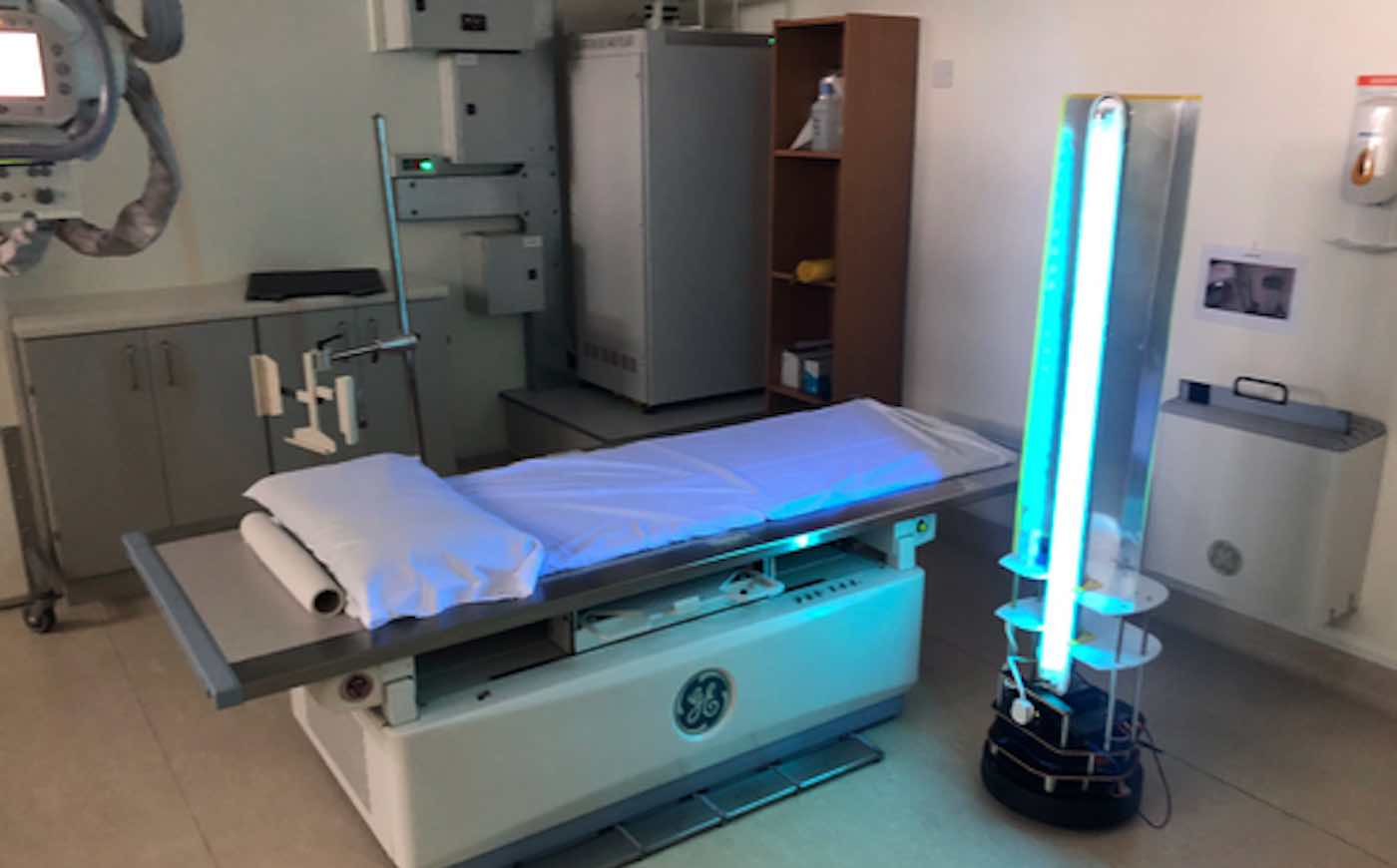 Irish Researchers Have Developed Hospital Robot That Uses Uv Light To Kill Viruses Bacteria And Germs
Irish Researchers Have Developed Hospital Robot That Uses Uv Light To Kill Viruses Bacteria And Germs
 Uv Bacteria Killing Robot Cleans Hospital Rooms Far Better Than Humans
Uv Bacteria Killing Robot Cleans Hospital Rooms Far Better Than Humans
 Ledrise High Performance Led Lighting Disinfection With Uv Light 99 Kill Rate For Bacteria And Viruses Incl Covid 19
Ledrise High Performance Led Lighting Disinfection With Uv Light 99 Kill Rate For Bacteria And Viruses Incl Covid 19
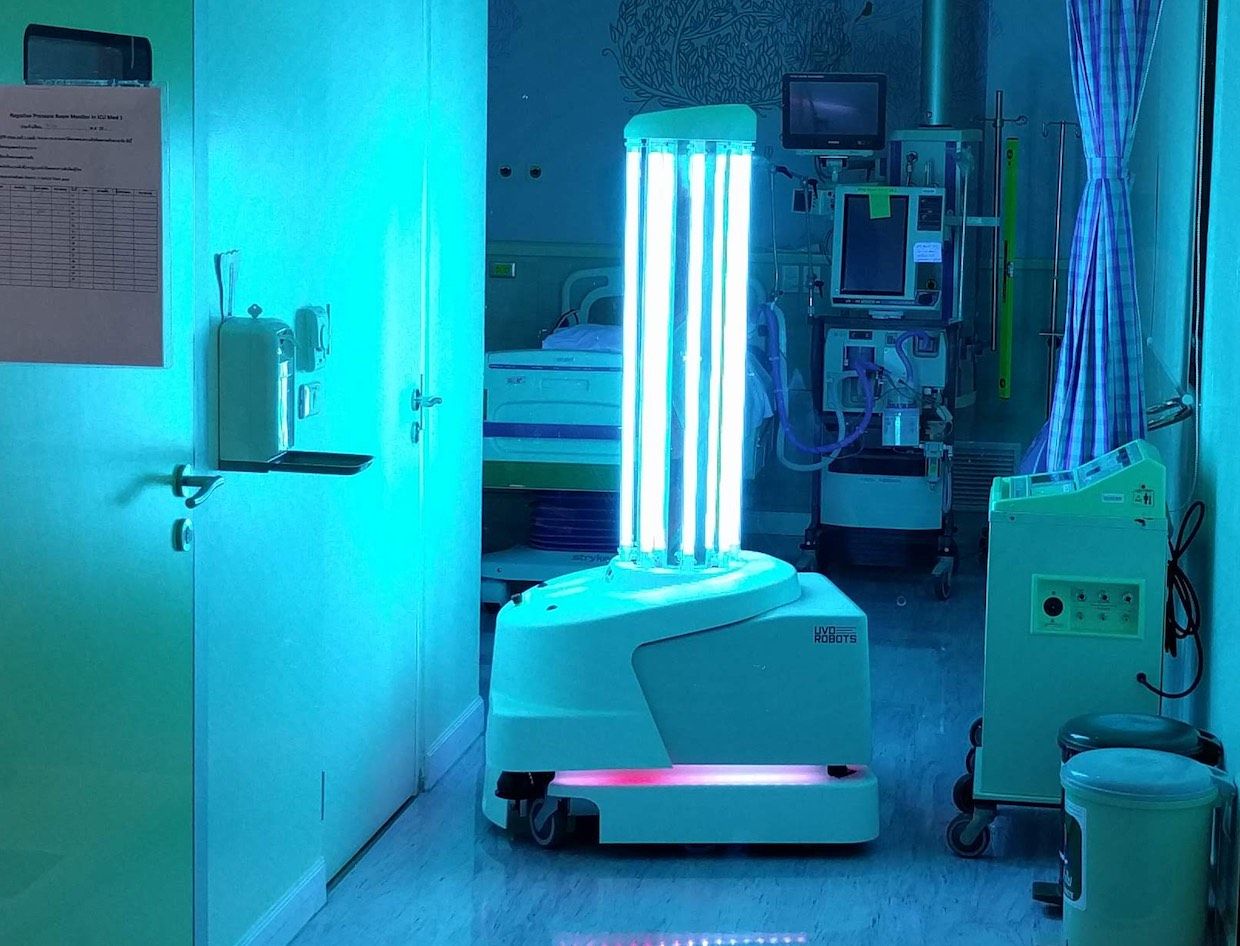 Autonomous Robots Are Helping Kill Coronavirus In Hospitals Ieee Spectrum
Autonomous Robots Are Helping Kill Coronavirus In Hospitals Ieee Spectrum
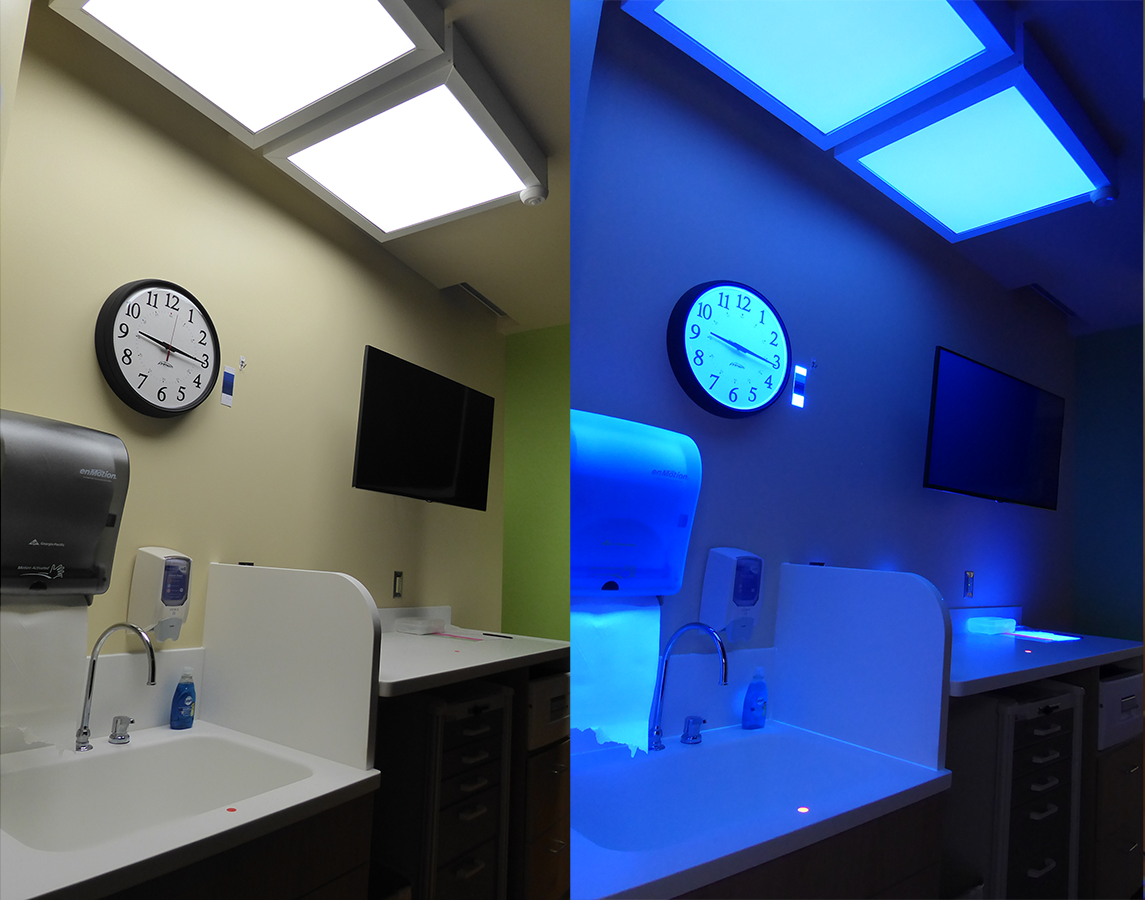 Lrc Studies The Use Of Uv A Led Lighting To Disinfect Hospital Room Leds Magazine
Lrc Studies The Use Of Uv A Led Lighting To Disinfect Hospital Room Leds Magazine
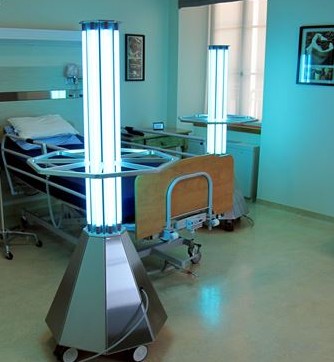 Ultraviolet And Hvac Keys To Reducing Hospital Acquired Infections Hospital News
Ultraviolet And Hvac Keys To Reducing Hospital Acquired Infections Hospital News
 Vancouver Hospital First In Canada To Use Bug Killing Robot Armed With Uv Light Times Colonist
Vancouver Hospital First In Canada To Use Bug Killing Robot Armed With Uv Light Times Colonist
 Eye Healthcare Clinic S Ultraviolet Light Systems Prevent Hospital Acquired Infections Promote Iaq Eyewire News
Eye Healthcare Clinic S Ultraviolet Light Systems Prevent Hospital Acquired Infections Promote Iaq Eyewire News
 Danish Disinfection Robots Use Uv Light To Kill Viruses And Bacteria Inceptive Mind
Danish Disinfection Robots Use Uv Light To Kill Viruses And Bacteria Inceptive Mind
 Uv Light Disinfection In Hospitals Lightsources Inc
Uv Light Disinfection In Hospitals Lightsources Inc
 Sanitizexperts Ultraviolet Light Disinfection Reduces Hospital Infections
Sanitizexperts Ultraviolet Light Disinfection Reduces Hospital Infections

No comments:
Post a Comment
Note: Only a member of this blog may post a comment.